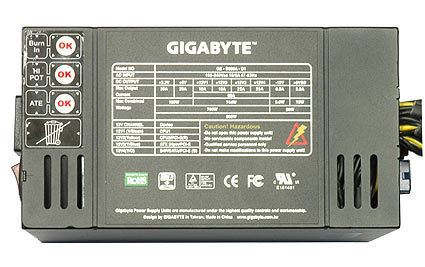PC Power Supplies: More Important than You Think
Proper Sizing For Power Supplies
The total wattage that a power supply must deliver depends on the actual components that go into any given computer. If you start with the requirement that each PCIe x16 slot be allotted up to 75 watts, and then add two or four PCI Express graphics cards into the equation, it's easy to understand how such a system simply wouldn't work at full load with a 300 watt power supply. It's also not hard to conceive that high-end CPUs will always require more power than mainstream models need.
Because determining the effective power consumption of a PC build involves more heavy lifting (and math) than most people are willing to undertake, the process of selecting the proper power supply for a PC should always derive from analysis of the worst case scenario. Most components in a PC operate at 12 Volts, so we simplify matters by assuming that the whole computer is serviced only with a 12 V rail, then use this to analyze the amperage ratings for power supplies.
Starting with the 263 watts that our test rig consumed and taking our assumption that this is delivered over a single 12 V rail into account, this leads to power levels of about 22 Amps (263 W / 12 V = 21,916 mA). Because delivering the total power budget for the system on a single 12 V rail is just a theoretical construct, and doesn't really happen in practice, our assumption leads us to the conclusion that a PSU that can deliver 22 amps on the 12 V rail will indeed suffice to meet the needs of our test system.
Combined Power
Those who take the time to read the ratings on a power supply carefully will immediately notice that they include numerous different values. Among them, 12 volt values appear multiple times, where wattage ratings apply only to the 3.3 V and 5 V rails. Voltages are divided among multiple rails, so we can infer the power levels that these rails carry as a fraction of the total power levels for the device. Moreover, the values for the 3.3 V and 5 V rails are typically presented as a single value, known as combined power. Those who have followed the fortunes of combined power values on power supplies for any length of time can't help but notice the trend toward increasing use of 12 V power in computers. Whereas older 300 W PSUs typically claimed combined power values of 180 to 190 W, current 300 W models are more likely to claim 120 W.
Vital stats on a power supply label show amperage for each rail
Get Tom's Hardware's best news and in-depth reviews, straight to your inbox.
Current page: Proper Sizing For Power Supplies
Prev Page Why Are Efficiency Measures So Important? Next Page Functional Differences Among PSUs-
Proximon You resurrected a 3.5 year old thread to say that with your first post? That's really awesome. You are a special person.Reply

